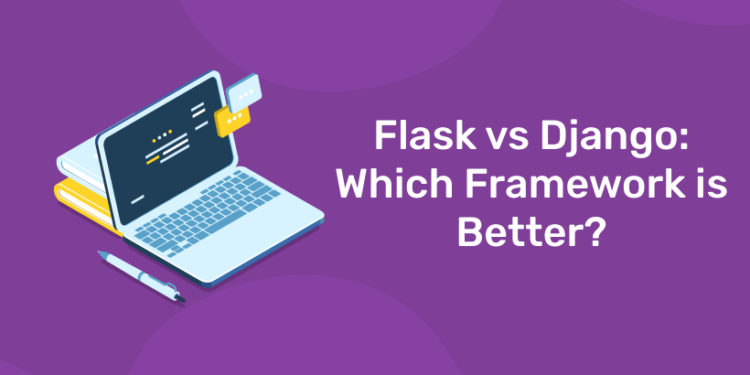The likelihood of using a framework is high if you’re using Python to create a web application. By offering reusable code or extensions for frequent activities, a framework “is a code library that makes a developer’s life easier while designing dependable, scalable, and maintainable online applications.” Python has a variety of frameworks, such as Flask, Tornado, Pyramid, and Django.
Learn Coding in your Language! Enroll Here!
A Python framework called Flask is accessible under a BSD license and is based on Werkzeug, Jinja2, and the Sinatra Ruby framework. Armin Ronacher developed it at pocoo. Even while Flask is still relatively new compared to most Python frameworks, it already enjoys popularity among Python web developers and offers a lot of promise. Let’s examine Flask, a so-called “micro” Python framework, in more detail. Flask was made to be simple to operate and expand. Building a solid foundation for web applications of various levels of complexity is the goal behind Flask. You are then free to connect any extensions you deem necessary. You are also allowed to create your modules. For every project, Flask is fantastic. It works particularly well for prototyping. The Werkzeug WSGI toolkit and the Jinja2 template engine are two external libraries on which Flask depends.
Power up your career with Entri Elevate – Full Stack Development Course!
The Django framework, for instance, comes with authentication, URL routing, a template engine, an object-relational mapper (ORM), and migrations for database schema. When compared to the Flask framework, which necessitates the use of a separate library, such as Flask-Login, for user authentication. Simply put, the extensibility and batteries-included philosophies represent two distinct approaches to framework development. Inherently, neither philosophy is superior to the other. Over the past ten years since the framework’s development, the Django project’s stability, performance, and community have all greatly expanded. On the internet and in books, comprehensive instructions and best practices are widely accessible. With each iteration, the framework keeps introducing important new features like database migrations.
Uses of Flask
Python’s Flask API enables us to create web applications. Armin Ronacher was the person who created it. Because it requires less base code to construct a straightforward web application, Flask’s framework is more explicit than Django’s framework and is also simpler to understand. A web framework, also known as a web application framework, is a group of modules and libraries that enable programmers to create applications without having to write low-level code for things like thread management and protocols. Flask is built using the Jinja2 template engine and the WSGI (Web Server Gateway Interface) tools.
A Python framework called Flask is used to create web apps. Flask is a back-end framework, thus rather than focusing on the appearance or style of the web app, it offers the technologies, tools, and modules that may be used to develop the real functionalities of the web app. One of the simpler frameworks for beginners to understand is Flask. This framework’s syntax and rules are relatively straightforward enough for beginners to learn. Flask provides all the characteristics needed to be utilized for building a useful web application, whilst being beginner-friendly. For creating the backend of online applications, Flask is preferred by many developers and software firms. Because it doesn’t require any additional tools or libraries, Flask is referred to as a micro-framework. With the capacity to scale up to sophisticated systems, it is meant to make getting started with web application development quick and simple.
Learn Coding in your Language! Enroll Here!
Uses of Django
The Lawrence Journal-World, a publisher of newspapers, commissioned Django to power their first web application. It should be fantastic at handling projects including large amounts of text content, media files, and high traffic, as well as anything else that functions like a web-based monthly. But the paradigm can be used in many contexts than just the publishing sector. Additionally, Django is used to create social media platforms, healthcare, and finance apps for travel and booking. Here are some of the major sectors which Django is used for:
- financial platforms with tools for assessing and approximating results depending on one’s risk tolerance, the likelihood of attaining goals, and personal data;
- bespoke CRM systems built-in for internal data;
- B2B CRM tools for managing business-to-business communication;
- platforms that enable two parties, like a business and a consumer, to communicate;
- high-volume search engines or online stores;
- mobile applications for iOS and Android that allow web applications;
- Systems for evaluating real estate properties; systems for managing documents;
- platforms for dealing with legal matters, such as confirming a mortgage’s terms or a lease’s existence.
Some businesses decide to use multiple frameworks as the foundation for their initiatives. Separate features can also be developed using Django, such as:
- a notification system that sends emails to users;
- a sophisticated logic filter with dynamically changing rules;
- Tools for data analysis; generators based on algorithms;
- Investing fund management interfaces;
- admin dashboards;
- Photo-based verification systems;
- Additionally, other capabilities make it easier to construct platforms for B2B and CRM, online markets, reservation services, and more.
| Are you aspiring for a booming career in IT? If YES, then dive in | ||
| Full Stack Developer Course | Python Programming Course | Data Science and Machine Learning Course |
Django vs Flask
Django and Flask are two of the most well-liked web frameworks for Python. Flask emerged as an alternative to Django because designers required more flexibility so they could choose how to implement things, but Django does not allow such extensive modification of its modules. Working with Flask allows an experienced Python designer to do projects in incredibly short timescales because it is so simple and direct. Let us look at the differences between these two frameworks:
| Django | Flask |
| It operates in a monolithic manner. | It employs a variety of working styles. |
| There is no virtual debugging support. | It has a virtual debugging debugger that is built in. |
| Its framework is more traditional in structure. | haphazard web framework architecture. |
| Applications with several pages can use it. | Only single-page programs can use it. |
| The traditional extended structure is extended the layout | Layout Extend is an arbitrary structure. |
| does not rule out setting versatility | It is acknowledged that the application number displayed in Flask as of now represents all possible phases to organize a Flask code. |
| Python-based Django is a free, open-source system that emulates the MVT (model view Template) method of structural design. | Flask might be a Python-based, more compact system that doesn’t require any external libraries or specialized instruments. It also uses expansions and lacks a database layer or procedures for shape approval. |
| Urls.py is used to set the association properties, and the principal coordinating see of the regex list handles requests. | The see decorator typically sets the URI, though a centralized setup is also an option. Sometimes the most recent designs coordinate with the URIs, while the latter are arranged by default. |
| Django offers a comprehensive experience: your programs and endeavors come with an admin board, database interface, ORM, and registry structure out of the box. | Flask offers simplicity, versatility, and precise control. It lacks opinion. |
While Django requires some prior reading before you can develop even a Hello World application, Flask allows you to start with some basic programming knowledge. However, as your project structure expands, you discover that adding new functionalities is more difficult in Flask than it would be in Django.
Power up your career with Entri Elevate – Full Stack Development Course!
Conclusion
You may now have a solid understanding of how each framework works and its suggested uses for it. Despite this, the Flask framework is also used to build a number of well-known, highly trafficked websites that function admirably and on par with Django-built websites. While Django and Flask both share many essential concepts, Django is more expansive, and complex, and has a steeper learning curve. Therefore, start using Flask to get a feel for how a web framework functions before switching to Django for more involved projects. Or you can specialize in one area and swap when your career necessitates it rather than trying to learn everything at once.
Learn more about frameworks and tools of Python programming language by simply joining Entri app.
| Our Other Courses | ||
| MEP Course | Quantity Surveying Course | Montessori Teachers Training Course |
| Performance Marketing Course | Practical Accounting Course | Yoga Teachers Training Course |










